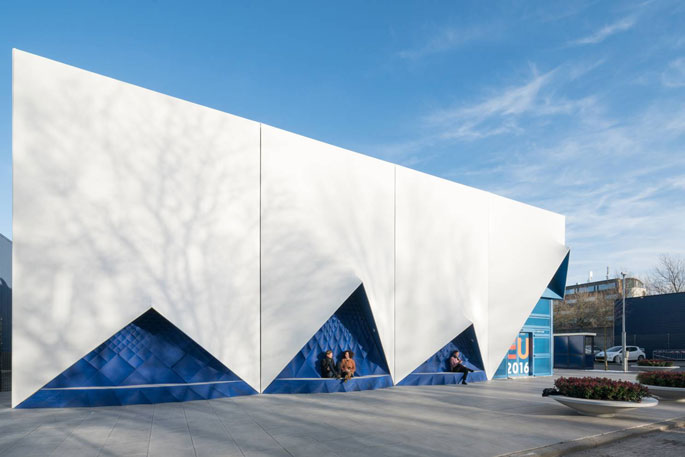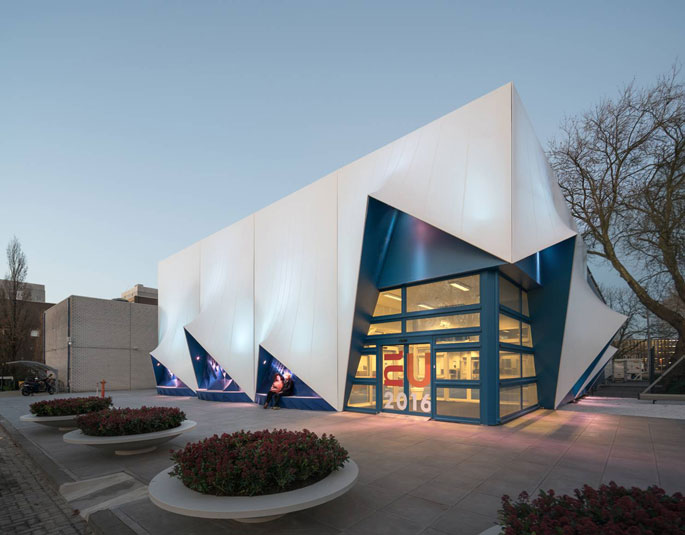When DUS Architects launched the Canal House project, where they used the gigantic KamerMaker 3D printer to build an entire house, it was clear that their real goal was – even beyond building the actual house – that of spreading awareness about the use of 3D printing technologies. They did so through a local museum that was visited by US President Obama himself. Even more importantly, though, they sought to acquire experience and knowledge about further possible applications.
Now, the first actual fruits of that experience are shining through the new Europe Building that DUS built in the Marineterrein (Amsterdam’s Marine Area) for the period of the Netherlands’ European Presidency. The gorgeous structure will have sails reminiscent of the historical sailing ships that were built in these premises, but one of the most interesting features may be the 3D printed external benches.
These EU-blue coloured, 3D-printed benches are located within the alcoves formed by the sails. Through the use of the KamerMaker technology – which can 3D print extra large, real-size elements up to 2 x 2 x 3.5 meters in size with a plastic extrusion process – the printed patterns build up from large to small and round to square, in order to depict the diverse community of the EU countries. At night, the sails are lit gradually with a pulsating light provided by Philips.
The 3D printed parts are made of a specially developed bio-plastic and the seating surfaces are filled with a light-coloured concrete. The bio-plastic can be shredded and reprinted after the presidency is over. This also marks the first time in the world that these kinds of XXL 3D prints are being used for a public building.
The production of the 3D prints has been done by Actual, an Amsterdam-based start-up that develops online customizing software for building elements linked to XL 3D printing. The façade has been developed in a very short time span through the close collaboration between DUS (design), and Actual (parametric development & 3D printing) with Neptunus (temporary structures), TenTech (engineering), Henkel (material development), Philips (light), and Heijmans (construction and assembly).
This is not the first highly innovative, 3D printing project taking place in Amsterdam, with the 3D printed metal bridge by MX3D also under way. It sure is a great way to unite Europe, in the name and face – or actually in the façade – of 3D printing and future technologies.






